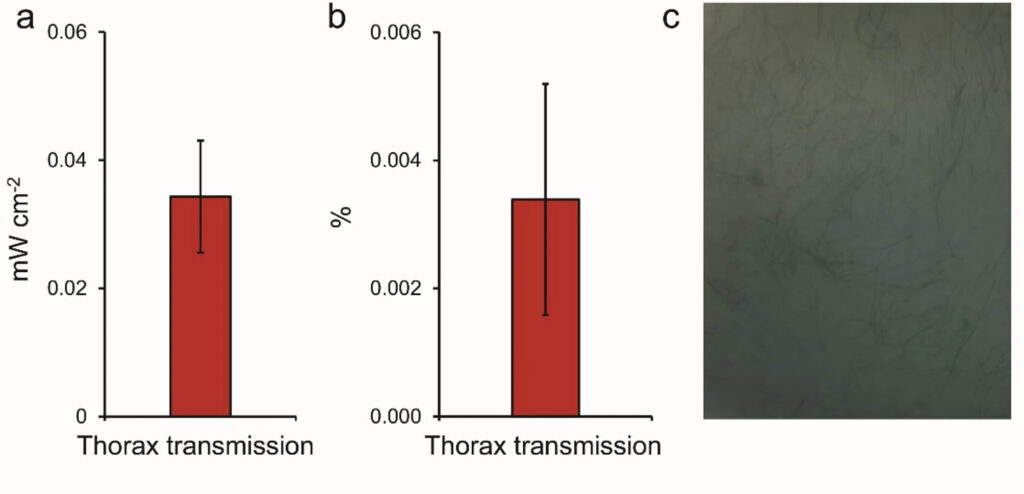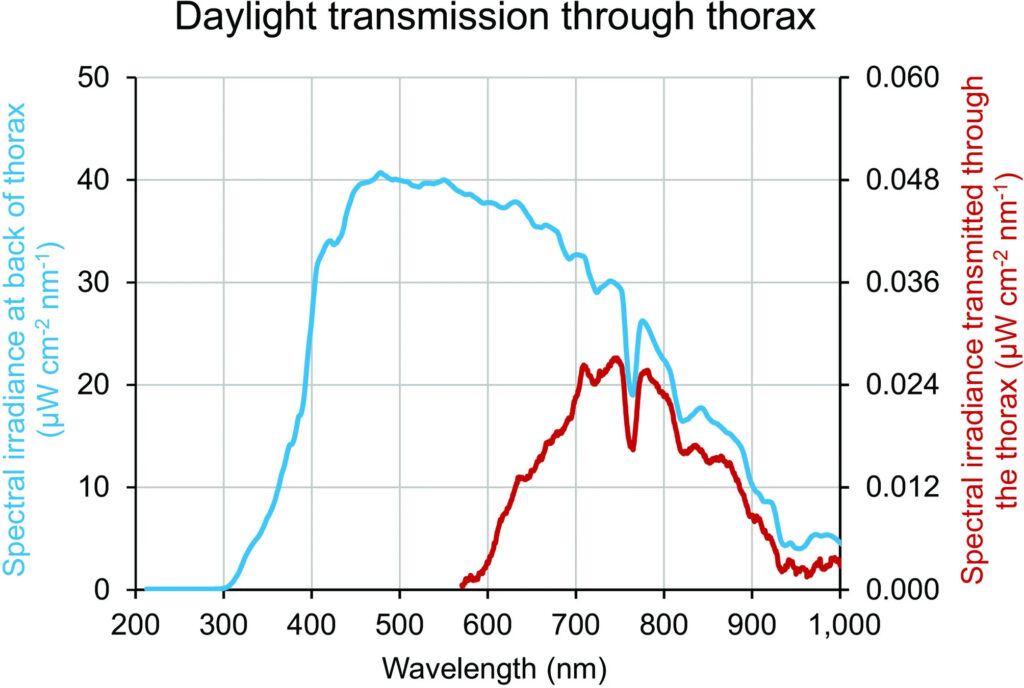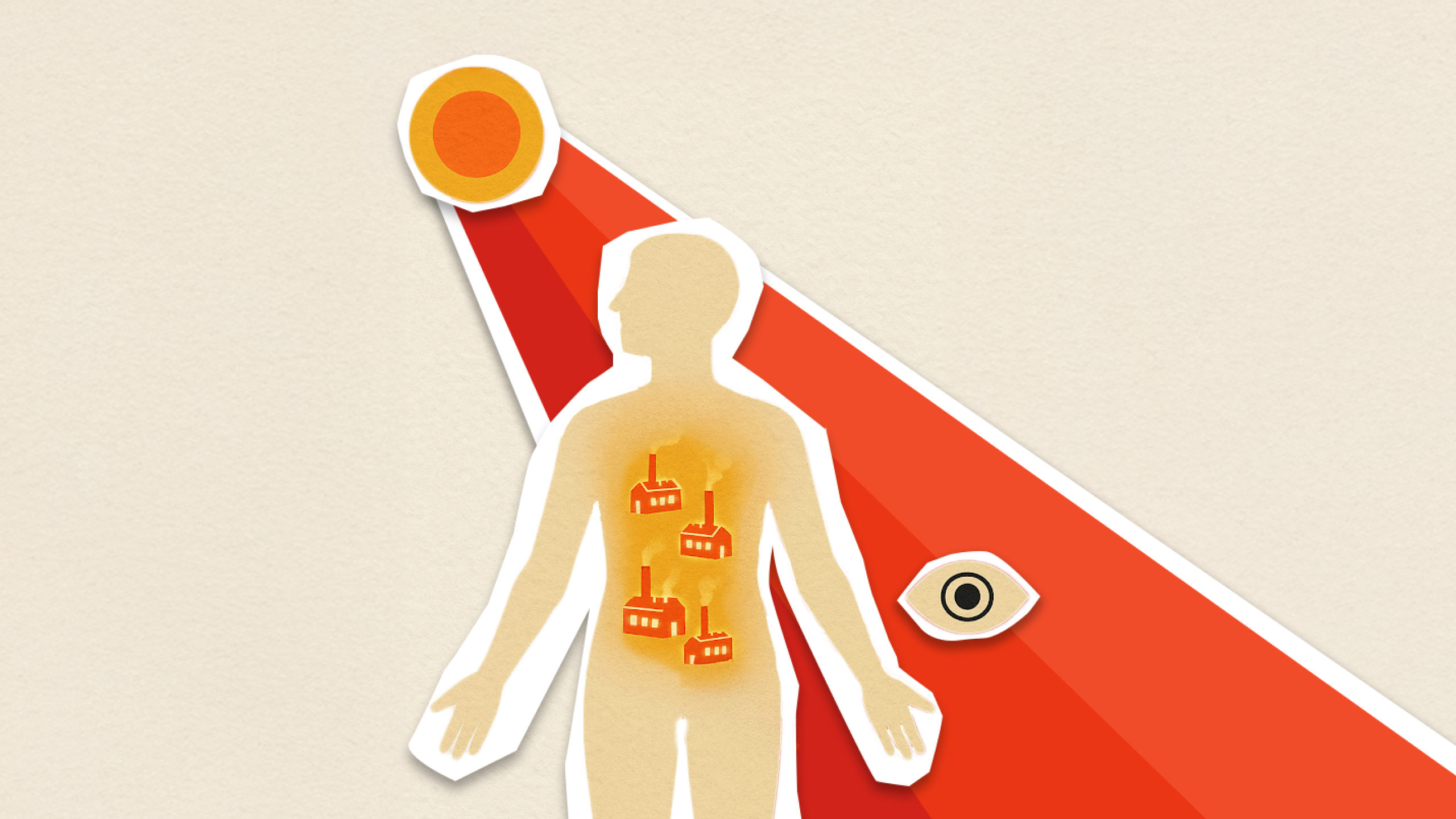New research shows that near-infrared light traveling through the body improves retinal function.
In a discovery that brings new meaning to the phrase “soaking up the sun,” researchers from University College London (UCL) Institute of Ophthalmology have found that certain wavelengths of natural light, notably longwave, deep red light, can travel through the body and measurably improve vision.
The peer-reviewed study, published in Scientific Reports, showed that specific wavelengths can travel through the thorax and were associated with enhanced mitochondrial function in the retina. Participants exposed to 850 nm light via a back-facing LED panel experienced measurable improvement in color contrast sensitivity 24 hours later.
READ MORE: Mixed Reality Glasses Restore Vision for Stroke and Brain Injury Patients
Light beyond the visible
The study focused on the systemic effects of wavelengths greater than 650 nm, the segment of the solar spectrum that corresponds to deep red and near-infrared light. These longer wavelengths penetrate biological tissue more deeply than visible light and may stimulate retinal mitochondria indirectly, even without direct eye exposure.
In the trial, participants received a 15-minute exposure to an 850 nm LED panel aimed at their back. A subgroup also had their heads wrapped in foil to fully block stray ocular exposure. All subjects underwent psychophysical testing of color contrast sensitivity before and 24 hours after exposure. The result was a statistically significant improvement in both protan and tritan contrast thresholds.
The authors suggested this may be the first study to show that longer wavelengths of light can improve visual function without shining directly into the eyes. Instead, the effect could be driven by systemic mitochondrial signaling, triggered when red light enters the body through the skin. This idea is supported by earlier animal studies but remains under investigation in humans. While previous research has shown localized benefits of red light therapy applied to the eyes, this study introduces the possibility of a whole-body route to retinal improvement.1

READ MORE: Rewiring Sight with Nanowires: Vision Restored and Infrared Detected in Primate Models
Why red light?
At the heart of the mechanism is the mitochondrion, the cell’s energy-producing powerhouse. Longer wavelengths, around 670 to 850 nm, are absorbed by components of the mitochondrial electron transport chain, improving efficiency by reducing interfacial water viscosity around ATP pumps. This accelerates ATP production, which in turn enhances function in energy-hungry tissues like the retina.
Previous work from the same UCL team showed that a single three-minute exposure of 670 nm light to the eyes could increase retinal ATP levels by 70% in aging photoreceptors and lead to lasting improvements in color contrast sensitivity. However, systemic 850 nm effects on ATP remain theoretical. Notably, 420 nm light had no effect, confirming the wavelength specificity of the mechanism.1
In older adults, where mitochondria start to lose their edge, the effect might become even more dramatic. The new findings build on this by showing that longer wavelengths can influence retinal performance when delivered through other areas of the body, though this systemic delivery remains a hypothesis that requires further validation.
READ MORE: Red Light Therapy Device Manufacturer Welcomes China’s Stricter Red Light Therapy Reclassification
A morning dose of light therapy
Timing, it turns out, matters. The benefits were seen only when the light was administered early in the day, aligning with mitochondrial circadian cycles. The team’s 2021 study showed that benefits occurred only when 670 nm exposure was administered in the morning, between 8 and 9 AM, when mitochondria are most responsive. Afternoon trials produced no improvement, consistent with findings from circadian biology that show mitochondrial activity follows a daily rhythm.1

Taken together, these studies suggest a time-of-day dependency and a precision window for light-based therapies, one aligned with the body’s own internal clocks.
Not just eye candy
- Longer wavelengths above 650 nm are associated with improved retinal function
- A 15-minute 850 nm LED exposure to the back enhanced color contrast sensitivity
- Effects are linked to increased ATP production via improved mitochondrial efficiency
- Benefits require precise timing, occurring only with early morning exposure
- Morning exposure proved more effective, aligning with mitochondrial circadian rhythms
- Builds on previous UCL research showing weeklong vision gains from a single red light session
Where this leads next
This study shines light on new possibilities in ocular therapy, not through surgery, injections or even eye drops, but through targeted use of light itself. While more work is needed to explore dosage, duration and delivery devices, the groundwork is already in place for mitochondrial modulation through longwave light as a non-invasive tool for visual health.
While the concept may seem novel, the mechanism is grounded in cellular biology. It relies on the body’s mitochondrial signaling networks to carry photonic energy to sites like the aging retina, one targeted wavelength at a time.
Editor’s Note: Read the full publication in Scientific Reports. This content is intended exclusively for healthcare professionals. It is not intended for the general public. Products or therapies discussed may not be registered or approved in all jurisdictions, including Singapore.
Reference
- Shinhmar H, Hogg C, Neveu M, et al. Weeklong improved colour contrast sensitivity after single 670 nm exposures associated with enhanced mitochondrial function. Sci Rep. 2021;11:22872.
